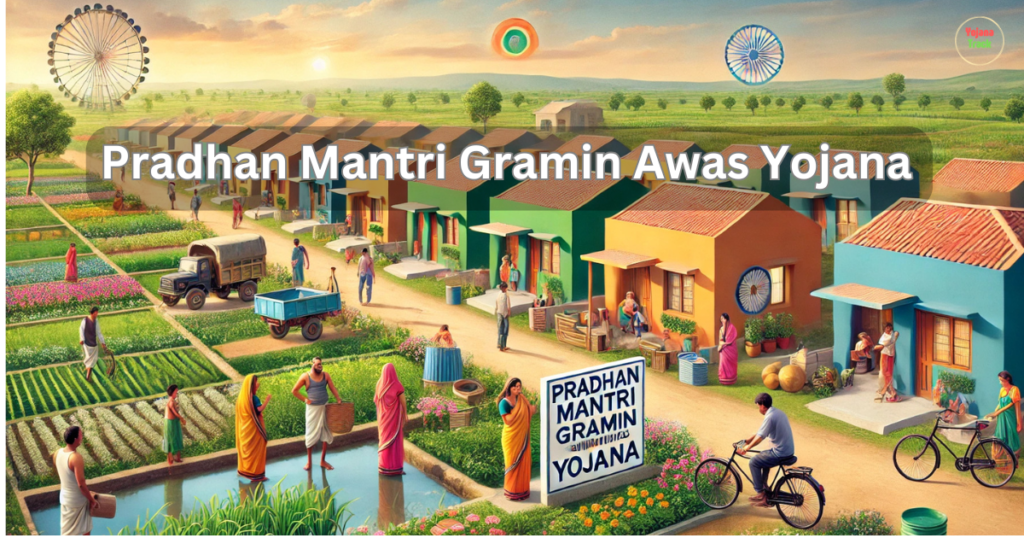India, a country with vast rural expanses, has long grappled with providing affordable and quality housing to its rural population. The Pradhan Mantri Gramin Awas Yojana (PMAY-G), formerly known as the Indira Awas Yojana, is a flagship initiative aimed at addressing this challenge. Introduced by the Government of India, this scheme envisions a significant transformation in rural housing infrastructure, ensuring every household has access to a pucca house by 2024.

What is Pradhan Mantri Gramin Awas Yojana (PMAY-G)?
The Pradhan Mantri Gramin Awas Yojana is a central government scheme launched in April 2016 to provide financial assistance for constructing affordable, durable, and eco-friendly housing units for the rural poor. This initiative supports the government’s vision of achieving “Housing for All” by the year 2024.
The scheme targets beneficiaries identified through the Socio-Economic and Caste Census (SECC) 2011 and prioritizes vulnerable groups such as Scheduled Castes (SCs), Scheduled Tribes (STs), minorities, and economically weaker sections.
Key Features of PMAY-G
1. Financial Assistance for Housing Construction
Eligible beneficiaries under PMAY-G receive financial support to construct pucca houses with basic amenities. The allocation of funds is as follows:
- Plain Areas: ₹1.20 lakh per unit
- Hilly, Difficult, and Northeastern Areas: ₹1.30 lakh per unit
2. Convergence with Other Schemes
To ensure holistic development, PMAY-G integrates with other government schemes such as Swachh Bharat Mission (SBM) for constructing toilets and Ujjwala Yojana for providing LPG connections. This convergence enhances the overall quality of life for rural households.
3. Selection of Beneficiaries
The scheme employs a transparent selection process using data from the SECC 2011. Beneficiaries are chosen based on predefined parameters, ensuring that aid reaches the most deserving individuals.
4. Use of Technology
PMAY-G leverages advanced technologies for monitoring and implementation. The AwaasSoft portal facilitates real-time tracking of progress, while geotagging ensures accurate verification of construction sites.
5. Emphasis on Women Empowerment
Ownership of houses is encouraged in the name of women, either solely or jointly with male family members, promoting gender equality and empowering rural women.
Eligibility Criteria for PMAY-G
To qualify for the Pradhan Mantri Gramin Awas Yojana, applicants must meet the following criteria:
- Be part of the SECC 2011 database.
- Belong to economically weaker sections such as SCs, STs, minorities, and landless laborers.
- Live in kutcha houses or houses with one or fewer rooms.
- Not own any motorized vehicles, mechanized farming equipment, or fishing boats.
- Do not pay income tax or professional tax.
How to Apply for PMAY-G
1. Online Application
Applicants can register for PMAY-G through the AwaasSoft or PMAY-G official portal. Here are the steps:
- Visit the official PMAY-G website.
- Click on the “Stakeholder” section and choose “IAY/PMAYG Beneficiary.”
- Enter the necessary details, such as Aadhaar number, and proceed with verification.
- Fill out the application form with accurate details and upload required documents.
2. Offline Application
Applicants can also apply through their nearest Gram Panchayat or Common Service Centers (CSCs). The Gram Sabha verifies and forwards the application for approval.
Documents Required for PMAY-G
- Aadhaar Card
- Bank account passbook
- Job card issued under MGNREGA
- Income certificate
- Address proof
- Caste certificate (if applicable)
Progress and Impact of PMAY-G
Since its launch, PMAY-G has made remarkable strides in improving rural housing:
- Over 2.5 crore houses have been constructed as of 2023.
- Beneficiaries now have access to housing equipped with toilets, electricity, and clean cooking facilities.
- The scheme has played a crucial role in reducing homelessness and improving the quality of life for millions of rural families.
Impact on Rural Development
PMAY-G has positively influenced rural areas by generating employment opportunities through construction activities and promoting the use of local materials. It has also enhanced the dignity and self-esteem of beneficiaries by providing them with secure and sustainable housing.
Challenges in Implementation
Despite its success, PMAY-G faces certain challenges:
- Delayed Fund Allocation: Timely disbursal of funds remains a concern in some regions.
- Geographical Barriers: Remote and hilly areas pose logistical challenges for material transportation and construction.
- Beneficiary Awareness: Lack of awareness among eligible beneficiaries sometimes leads to underutilization of the scheme.
Future Goals of PMAY-G
The government is committed to achieving its goal of “Housing for All” by 2024. Efforts are underway to:
- Increase the pace of construction.
- Address bottlenecks in fund allocation and implementation.
- Enhance beneficiary awareness through targeted outreach programs.
Conclusion
The Pradhan Mantri Gramin Awas Yojana is more than just a housing scheme; it is a lifeline for rural India. By addressing the fundamental need for secure and sustainable housing, PMAY-G has set a benchmark for inclusive development. Its impact extends beyond infrastructure, fostering socio-economic growth and uplifting millions of rural families.